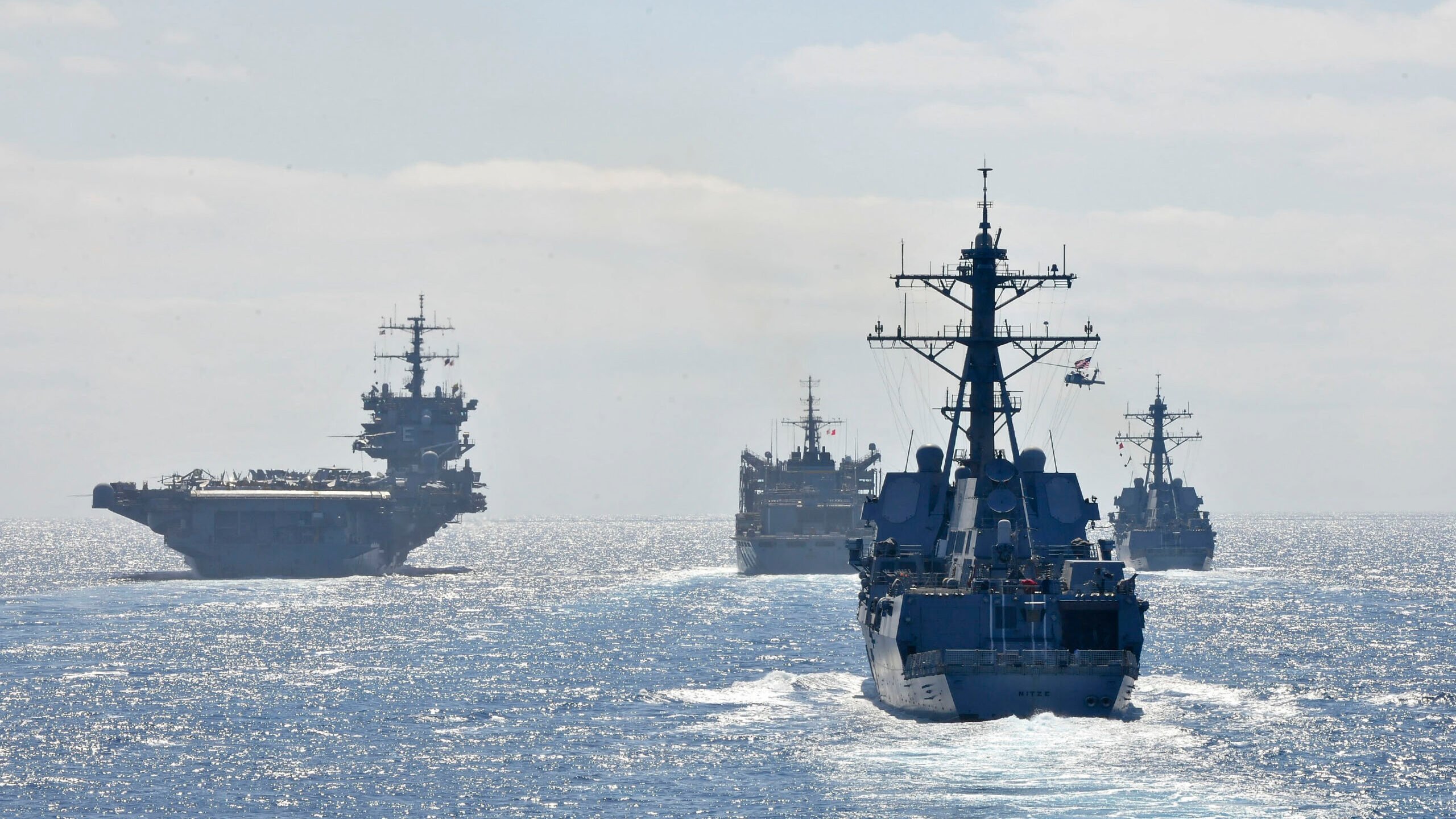
The aircraft carrier USS Enterprise (CVN 65), left, the Military Sealift Command fast combat support ship USNS Supply (T-AOE 6), the Arleigh Burke-class guided-missile destroyers USS Nitze (DDG 94), and USS James E. Williams (DDG 95) conduct a replenishment at sea. (U.S. Navy photo by Mass Communication Specialist 3rd Class Alex R. Forster)
WASHINGTON — The Navy’s senior admiral overseeing strategic sealift recapitalization says the service has made “tremendous progress” in closing the Pentagon’s forthcoming capacity gap, but stopped short of saying a potential crisis in 2025 has been averted.
“I believe that [Army Gen. Stephen] Lyons would be very proud of us. And I think that we’re showing progress,” said Vice Adm. Rick Williamson, deputy chief of naval operations for fleet readiness and logistics.
Williamson was referring to comments made by Lyons, a former US Transportation Command chief, in 2020 about how the Pentagon’s strategic sealift fleet is in dire straits. That fleet is comprised of auxiliary ships manned by civilian mariners and maintained by the Department of Transportation. If a large scale war broke out overseas, these ships would be activated within days and called upon to transport Army and Marine Corps ground supplies.
“By the mid-2030s, over half the sealift fleet will be unusable, placing an unacceptable risk on the Joint Force, especially the Army, to deliver large-scale combat power over the ocean,” Lyons told a Senate panel in February 2020. He added that the sealift fleet’s capacity, traditionally measured in the square footage of storage space on the ships, would start dropping between 1 and 2 million square feet per year in 2025.
As the deputy chief for fleet readiness and logistics, Williamson’s office is charged with overseeing the recapitalization plan set in motion in 2018 to revitalize the strategic sealift fleet. Asked whether Lyons’ projections about the problems ahead would still come to fruition, the vice admiral on Tuesday did not say the potential crisis had been averted, even as he laid out a number of efforts the Navy has taken since then to correct its course.
“Hopefully, by the end of January, I’ll [have] about 87% to 90% of that square footage available to be used,” he said, referring to the raw capacity of the fleet to carry supplies and personnel.
Williamson cited efforts such as removing ships from the fleet that were outdated or contained parts that don’t “make sense to own,” such as some boiler-operated vessels. He also said two recent purchases of used ships successfully replaced some vessels that were roughly 27 years old.
The Maritime Administration, a civilian agency under the Department of Transportation, is responsible for maintaining the civilian-operated ships that make up the Navy’s strategic sealift fleet. It has also played a key role in assessing the market for potential US-flagged ships the Navy could consider purchasing.
“Getting the money into [the Maritime Administration’s] hands to be able to act fast when the market is good…[which means there’s] not a bunch of containers backed up off the coast of California,” Williamson said in an ostensible reference to the problems the coronavirus caused for shipping in early 2020, “allows us the opportunity to invest” in roll-on, roll-off ships.
Roll-on, roll-off ships, also called “Ro-Ros,” are a key auxiliary vessel for the sealift fleet because they are designed with a ramp that allows virtually any wheeled vehicle to quickly “roll on” and “roll off” the ship before and after an overseas transit.
Since Lyons’ comments in 2020, lawmakers have been increasingly anxious to see the Navy ramp up its recapitalization efforts, inserting a variety of provisions and prohibitions in previous defense policy bills that pressured the Navy to accelerate its purchases of used vessels and the construction of newer multi-purpose auxiliary ships.
The legislative prodding has had mixed success, and lawmakers such as Reps. Rob Wittman, R-Va. and Joe Courtney, D-Conn., insist more must be done.
Courtney on Wednesday praised new progress from the Maritime Administration on a tangential effort establishing a new Tanker Security Program.
“The rule published today kicks off the process of standing up a critical program necessary for our at-sea logistics and mobility enterprise for the Departments of Defense and Transportation” said Courtney, chairman of the House Armed Services’ seapower and projection forces subcommittee. “The Seapower Subcommittee pushed for the authorization of the Tanker Security Program on a bipartisan basis to address alarming capacity gaps in our at-sea fueling logistics capabilities and our reliance on foreign-flagged vessels to deliver these resources.”
The program would provide stipends to the owners of privately-owned, militarily useful tanking ships and in exchange the ships’ owners agree to use their vessels to assist the federal government if called upon.
Shipbuilder Austal USA names Michelle Kruger as new president
Kruger had been serving as interim president since former chief Rusty Murdaugh resigned last spring.



























